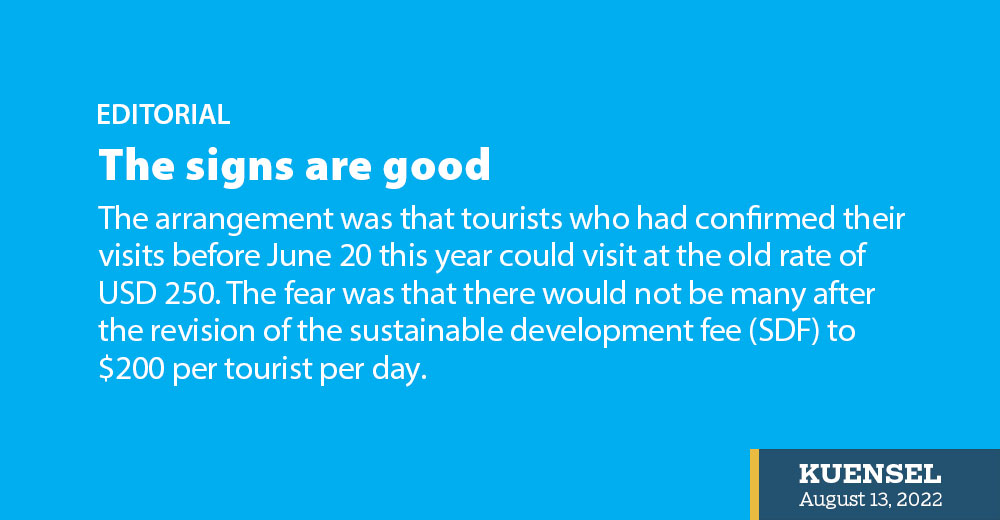The arrangement was that tourists who had confirmed their visits before June 20 this year could visit at the old rate of USD 250. The fear was that there would not be many after the revision of the sustainable development fee (SDF) to $200 per tourist per day.
As of Wednesday, 27 tourists have confirmed their visit under the new fee. Some have visited and left, some are in the country and some are on their way. Twenty-seven is a small number to be happy about given that Bhutan sees hundreds of thousands of tourists. In 2019, before the Covid-19 pandemic disrupted the travel and tourism industry, 316,000 visited Bhutan, including regional tourists.
However, amid concerns that there will not be tourists who would pay $200 a day to visit Bhutan, the number, even before the border is opened, is a good sign that exclusivity matters. It is an indication that the new policy will not turn away potential tourists. It may discourage many, but it is exactly what the policy wanted – high value, low volume.
We could expect more when the borders finally open on September 23 coinciding with the Autumn tourist season. Many tourists visit Bhutan during the fall which is also the festive season where our rich and unique culture is at full display at the numerous tshechus and when the majestic Bhutanese mountains welcome tourists with open arms, as wide as the passes.
Those in tourism are busy working on their maths. They know that tourists pay way higher than the $250 a day to visit Bhutan. For a few hundred dollars more, they could still visit and experience the exclusivity. Seeing a smaller crowd of tourists at popular sites is itself an exclusive for many who complain of Bhutan being crowded. The possibility of tourists to customise and book packages in the new system could make Bhutan more attractive. They need not be regulated with designated tours, guides and hotels, which many see as an inconvenience. Tourists will design their tour – choose whether to stay in a star hotel or a farmhouse, visit a temple or a village, eat in a restaurant or with a farmer’s family.
Most tourists come to Bhutan because we are different. The rich culture, environment, and hospitality are the attractions. For luxury, there are better destinations like the Caribbean islands. There will be tourists as long as we remain different.
The SDF was increased so that benefits from tourism would trickle down to all Bhutanese. This could be through improving infrastructure like roads or irrigation channels, funding free services like healthcare and education and our commitment to the environment. The $200 SDF goes directly to the government coffer. This should translate into improved infrastructure and facilities. For instance, a farmer may not need a toilet along the highway, but if the road is better, broader and shorter, he could market his farm produce faster.
Another fear is that the hotel industry would be affected as tour operators hold them on ransom. But even hotels can bring in tourists as tourists can book their own accommodation. We could, for the first time, see tour agents requesting hoteliers for tourists. If not, the government could help hotels through fiscal interventions as they did during the pandemic.


